I love the flavours found in Thai food. There is a great Thai restaurant in Winnipeg that is very accommodating to vegans and those on gluten-free diets. I eat there all the time, perhaps more than any other restaurant. But, eating out is expensive and I just can’t go out for Thai food every time I want to eat it (and I want to eat it a lot!) So, I have been exploring cooking Thai food at home, which has been really fun. I have had a few recipes sitting in my drafts, but I have wanted to do some more reading on food and cultural appropriation before I actually go ahead and post them on my blog.
I’m sharing this recipe for a vegan and gluten free version of Tom Kha soup, but I really hope you read my discussion on food and cultural appropriation first. I think that this is a conversation the vegan food blogger community should be having and I hope this post can contribute to a constructive dialogue. I also hope that if you disagree with my approach, or think there is something I could do better or differently, that you share your thoughts with me via the comment section or my email (theveganharvest(at)gmail.com).
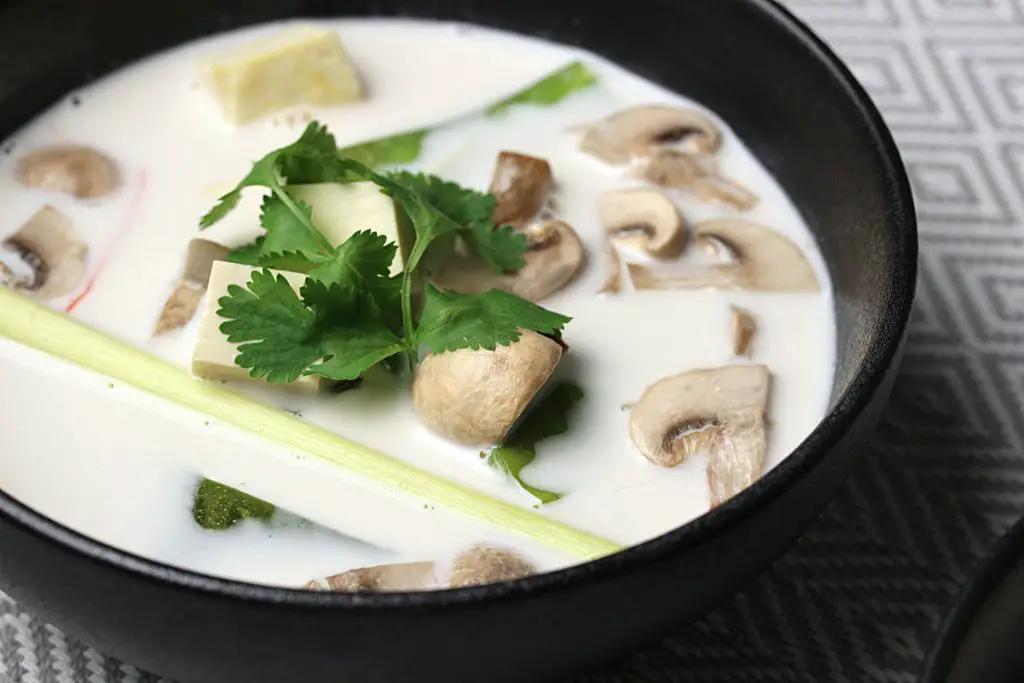
What is cultural appropriation?
Naturally, I went to the internet for some answers. In an article on Everyday Feminism, Rachel Kuo writes that:
“Cultural appropriation is when members of a dominant culture adopt parts of another culture from people that they’ve also systematically oppressed. The dominant culture can try the food and love the food without ever having to experience oppression because of their consumption.”
Kuo goes on to explain that eating food from a culture that is not yours is most definitely okay, but that food is appropriated when white folks “fetishize or commercialize it, and when they hoard access to that particular food.” In addition, we must acknowledge that “food culture has travelled and flowed in messy and complicated ways across the globe” and we must, must, must remember the impact of BOTH historical and ongoing colonization.
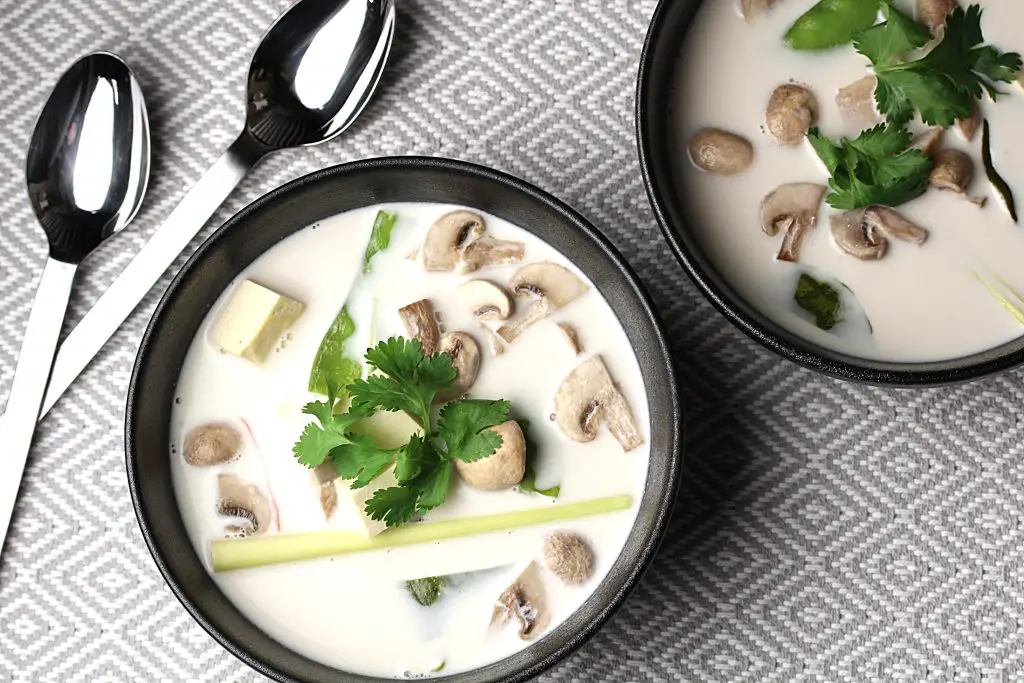
So, what does this mean for me, as a white food blogger?
Kuo sheds some light on this, bringing up perhaps the most important and relevant reminder for food bloggers and chefs, and that is that many of us profit from oppression. In the case of white food bloggers, it’s making money off your blog and claiming ownership over a recipe and not respecting and acknowledging where it came from. For white chefs, it is opening, for example, a Mexican restaurant and profiting off of, while simultaneously not supporting, Mexican people. These are just a couple of examples.
In a Globe and Mail article, many folks who were interviewed mentioned the difference between sharing and appropriating, highlighting that a major way to avoid cultural appropriation is to be respectful. One person of colour, who owns a restaurant in Toronto, said that “if someone wants to do something and do their own spin on it, then more power to them.” However, he clarified: “Just remember where it came from.”
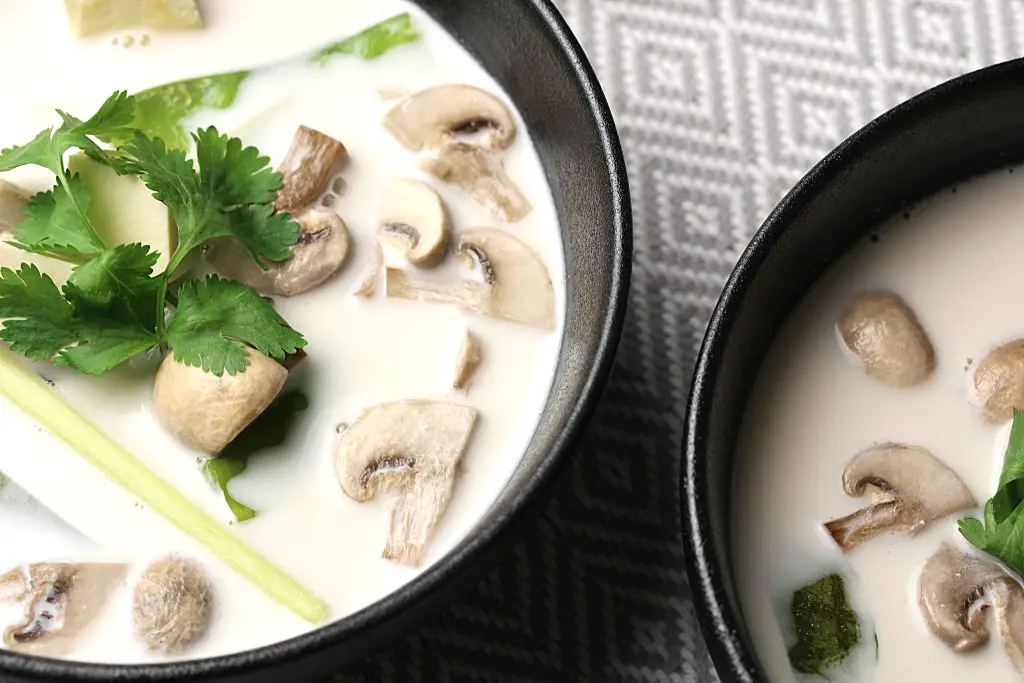
I would like to note that I do not make any money from my blog, but if I ever do, then I will certainly have to re-evaluate how I approach food blogging. I also want to make something very clear: I can take no credit for this recipe. I did research and I collected ideas, bringing together ingredients that have been used together for centuries.
What is Tom Kha soup, and how do you make it vegan and gluten free?
Tom Kha soup, originating in Thailand, combines kafir lime leaves (native to Thailand, as well as other tropical Asia countries), galangal, and lemongrass with coconut milk, fresh lime juice, and veggies (often mushrooms) for a delicious soup. From my understanding, fish sauce is often used and is a very important ingredient. Therefore, I wanted to offer something that is both gluten free and vegan, two ways of eating that I acknowledge can come with privilege and also exist in dialogues and ideas that are oppressive.
In Winnipeg, I have found some great local places to buy ingredients like kafir lime leaves and galangal. I hope you explore the various places you can get these ingredients and choose to support small, locally owned shops. Where and from whom you buy your ingredients is another key part of this conversation.
If there are ways that you think I can approach sharing recipes on my blog in a better/different way, I would be happy to offer you a meal in exchange for a chat.
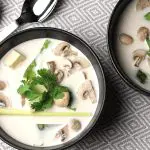
- 1 thumb-size piece galangal
- 2 stalks of lemongrass
- 500 ml coconut milk (it's fine if its a little more or a little less)
- 250 ml water
- 8-10 fresh kafir lime leaves
- 2 red chilli peppers*
- 1/2 cup snow peas (optional)
- 1 1/2 cup button mushrooms, quartered
- 1 cup extra firm tofu, cubed
- 1/2 tsp salt, or to taste
- 1 1/2 tbsp lime juice
- 1/2 tbsp tamari
- cilantro, as garnish (optional)
-
Peel the galangal and slice into strips. Next, prepare the lemongrass by chopping it into long sticks and then down the middle so it can release all its flavour.
-
In a medium sized soup pot, gently add 1 cup of the coconut milk, the galangal, and the lemongrass. Heat over medium heat, but do not bring to a boil (coconut milk is very sensitive to heat). You also do not want to stir the coconut milk to hard--be very gentle.
-
Once the coconut milk has heated but not boiled, add in the rest of the coconut milk and the water. Turn the heat down to medium-low.
-
Break the kafir lime leaves in half, and toss into the soup. Cut the chilli peppers in half, remove the seeds, and place into the soup.
-
Add the snow peas (if using), the mushrooms, and the tofu. Add 1/2 tsp of salt.
-
Cook the soup on low heat for 15 minutes, making sure to never let it reach a boil.
-
Add the tamari and lime juice. Add more lime juice if desired, and more salt if needed.
-
You can either remove the galangal, lemongrass, kafir lime leaves, and chilli peppers before serving, or just warn whoever is eating it that they're in there and they're not to be eaten.
-
Garnish with cilantro, if desired, and serve.
*the chilli peppers I used were so spicy! I always taste mine on the tip of my tongue to judge, cause you never know what you're going to get! I would add two, and add more later if it's not spicy enough for you.
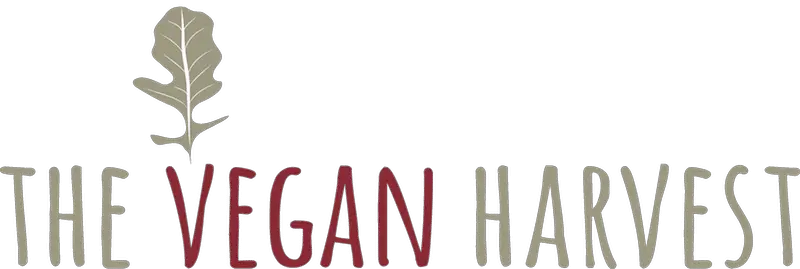
I’m visiting Winnipeg soon and wondering if you could recommend the restaurant that accommodates vegans? please and thank you!
Of course! Here are some of my faves, in no particular order:
Le Monkey Bar – all vegan ice cream place!
Cocoabeans – gluten free bakeshop with many vegan options
Sukothai or Sabai – fave Thai places, they can make a lot of their vegan, you just have to ask!
Charisma of India – a great buffet and last time I was there they had the vegan dishes labelled, if not, they’re very friendly and will help!
Acorn Cafe – all vegan cafe with smoothies, baked goods, and to-go lunch things
Delicious or Affinity – I think they’re all vegan, but I haven’t been since being diagnosed celiac but I loved them before!
Deer + Almond – some of the best food in the city, just ask for vegan options and they can adapt dishes!
Circle Kitchen – new all vegan gluten free place serving smoothies, juices, bowls, salads, and toasts
Oh Doughnuts – apparently the best vegan donuts, but I haven’t tried them because they aren’t gf
Tallest Poppy – brunch / lunch / dinner options
Cousin’s Deli – apparently they have the best veggie burger!
Sorrentos and Diana’s do vegan pizza well apparently!
Kokeb – Ehtiopian!
I am likely forgetting some, but I hope this is a good start 🙂 I also can’t try a lot of places because of the celiac thing, so there are many more places!